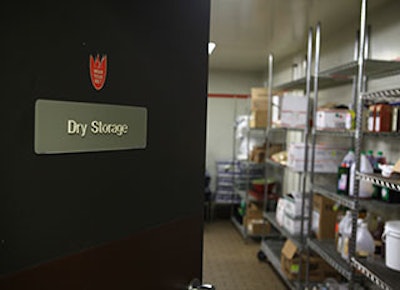
What does your food processing facility have in common with pests?
You may be thinking, “Hopefully, not a whole lot.”
But some pests actually place the same high value on ingredients that you do. In fact, some pests take ingredients as seriously as the entire food processing industry.
As important as ingredients are to your products, stored product pests need them for survival. Unprotected ingredients provide them with an endless meal, as well as safe shelter. If undetected, these fast breeders can multiply and work their way into your end products as well. In addition to damaging your ingredients, many stored product pests can secrete chemicals that alter the taste of food, and their larvae can irritate the digestive tract or even cause allergic reactions.
As a result, stored product pests can ruin your product and cause safety and legal concerns. Even worse, they can affect two of the most important assets your facility has: its reputation and your bottom line.
Stored product pests aren’t picky when it comes to choosing ingredients, either. They can feed on a variety of materials in your facility’s storage areas, including grains, beans, spices, nuts, dried fruits and cheeses. Few processing facilities are exempt from these stored product pests.
The smallest, biggest offenders
Beetles and moths are the most common stored product pests. Their larvae, which only grow to about a half-inch in size, can cause more damage than fully-developed adults. Each species has different feeding habits – based mostly on different biology – and fall into one of four categories.
- External feeders feed on the exterior of the kernel or finished cereal product and work their way inside. External feeders include cigarette beetles and Indian meal moths.
- Internal feeders, such as granary weevils and lesser grain borers, lay eggs within the grain and feed on kernels from the inside out.
- Secondary feeders are like external feeders in that they eat from the outside in, but they consume moldy or damp products. Spider beetles and fungus beetles, to name a few, will feed on products in poor condition.
- Scavengers – as their name suggests – will eat almost anything, including products that have been processed, broken or damaged by other insects. Scavengers, such as the red flour beetle and saw-toothed grain beetle, can be found in products ranging from cereals to chocolate.
IPM to the rescue
Managing stored product pests takes a comprehensive strategy, which is where Integrated Pest Management (IPM) comes into play. Instead of relying on chemical treatments after a problem is apparent, IPM focuses on a proactive cycle of rigorous inspection, sanitation and monitoring tactics.
To stave off any stored product pest infestations, work with your pest management provider to create an all-inclusive program focused on the following:
Ingredient care
- Inspect incoming shipments for signs of pests, such as webbing, larvae and live adult insects. You should be extra concerned if you find the packaging material has been damaged, as this would be the cause for a potential product infestation.
- Set aside a quality assurance sample of every shipment in a closed, labeled plastic container. If insects appear over time, immediately quarantine and inspect any remaining product and notify the supplier.
- Rotate ingredients on a first-in, first-out basis to help prevent them from deteriorating and inviting scavengers and secondary feeders.
Sanitation steps
- Use a vacuum with a high-efficiency particulate air (HEPA) filter to remove debris from cracks and crevices.
- Immediately clean up any product spills and encourage employees to do the same, whether it’s in a storage room or the break room.
- If you haven’t yet, start a continuous deep-cleaning program to ensure that every bay on every rack is inspected, vacuumed and wiped down completely at least twice per year.
Storage tips
- Store ingredients off the floor and at least 18 inches away from walls to allow access for staff to inspect and clean the area.
- As a precaution, remove any products that are damaged or found in poor condition.
- If possible, maintain storage rooms at 60 degrees Fahrenheit or lower – stored product pests can’t survive the cold temperatures. To help, consider installing insulating walls and cooling a smaller area.
Work with your provider
When it comes to monitoring – and, if need be, managing – stored product pests in your facility, it’s best to work with a pest management provider.
A pest management professional can work with your staff to show the hot spots around your facility and the telltale signs of activity. That way, your staff can be your first line of defense.
If stored product pests make it inside your facility, quick action means everything. Immediately discard any and all products that appear to be infested and call your pest management provider. Your provider can help identify the species you’re dealing with and treat the problem.
Should stored product pests be present, your provider may use pheromone traps, which synthetically reproduce the chemical secretions pests use to communicate, to capture them. Not only are these traps effective at catching stored product pests, but they will also help evaluate pest activity and determine the source of infestation and timing for treatments. Some pheromone traps can also disrupt mating and reproduction and ultimately eliminate certain moth pests.
Work with your pest management provider to develop a game plan for stored product pests now, before they are a problem. With a thorough and proactive pest management approach, you can help keep these nagging pests from damaging your ingredients, products, reputation and bottom line.
Dr. Zia Siddiqi is Director of Quality Systems for Orkin. A board certified entomologist with more than 35 years in the industry, Dr. Siddiqi is an acknowledged leader in the field of pest management. For more information, e-mail [email protected] or visit www.orkincommercial.com.





















